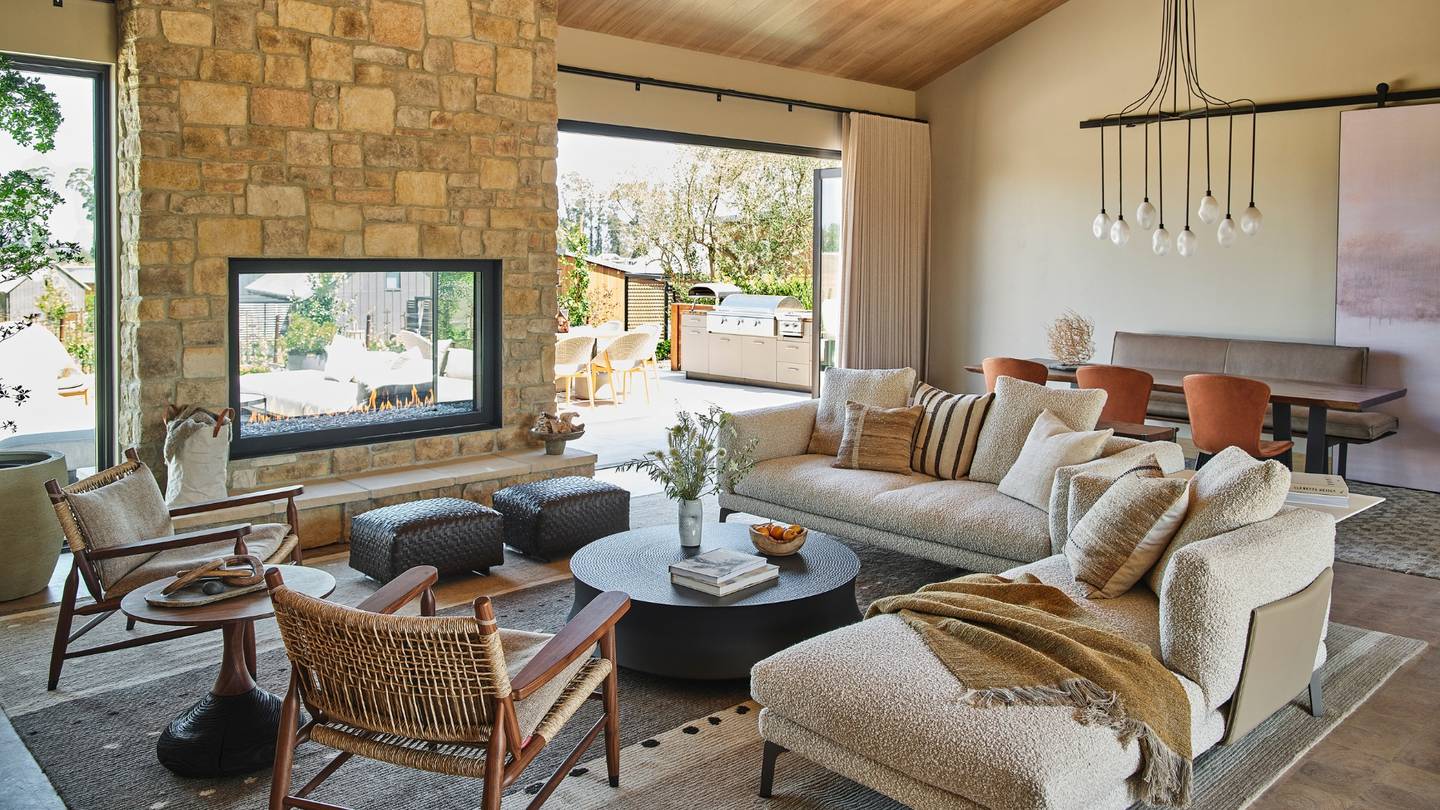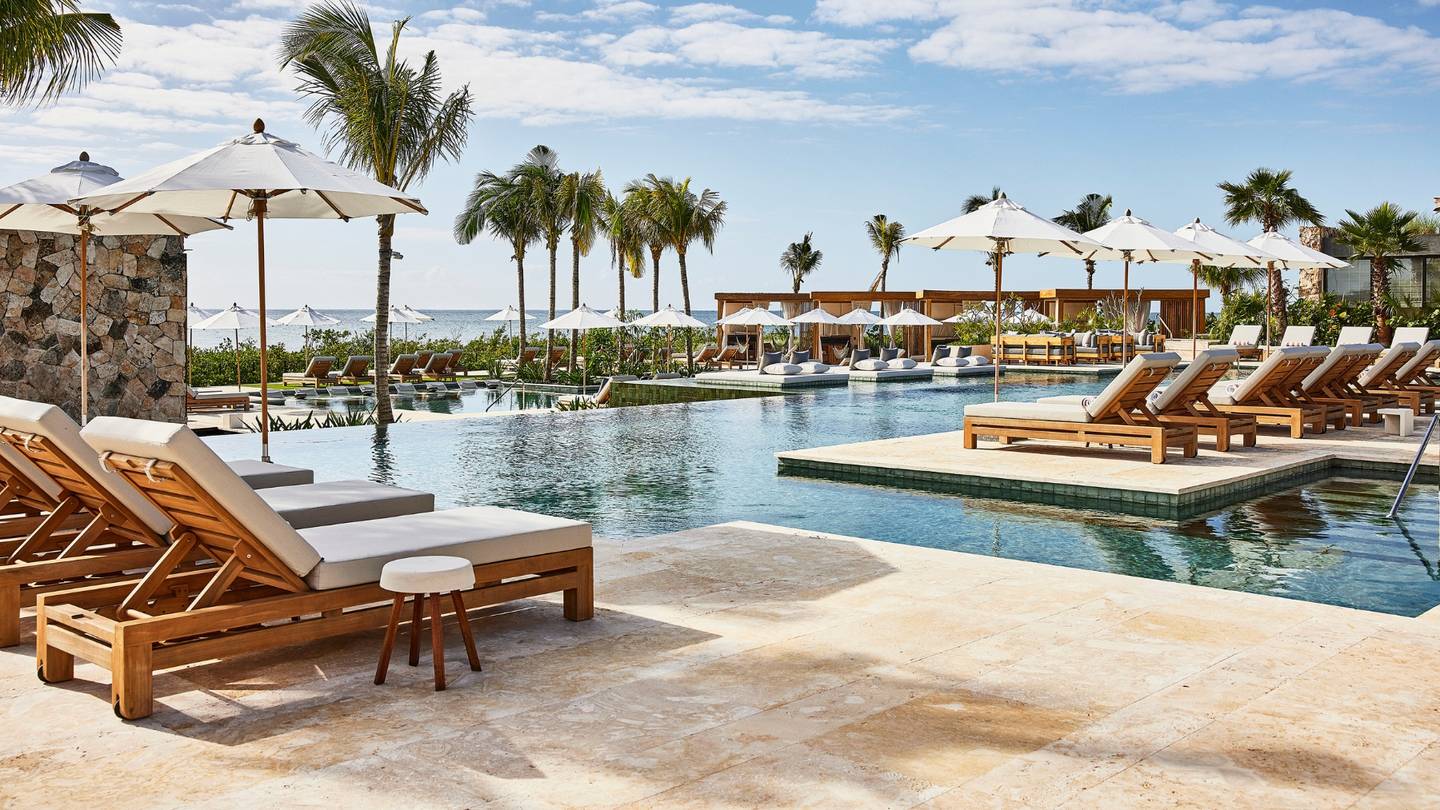
Globally, international tourism arrivals are set to rise by 30 percent in 2023 to 1.6 billion, according to market insights group Economist Intelligence Unit. Eager to embrace a full return to pre-pandemic lifestyles, consumers are set to ramp up spending on travel and its adjacent experiences — from dining to retail and leisure. Fuelling this acceleration are growing consumer interest in “experiential goods” and novel hotel and travel experiences, including one-of-a-kind properties.
Auberge Resorts Collection is moving to meet this consumer demand, focusing on considered portfolio expansion — with 26 resorts across three continents, the group will add a further fourteen, with six locations slated to open before 2026. Blurring the lines between home and hospitality, the group also offers 11 residential opportunities, where consumers can buy property onsite that benefits from access to resort facilities in addition to bespoke Auberge services.
While each resort benefits from the infrastructure and strategic vision of the Auberge group, an individualised approach is taken for each property’s aesthetic and amenities, designed to be sympathetic to their surroundings.
It’s a timely investment. In a proprietary survey with luxury research provider Altiant, BoF Insights found that high-net-worth individuals are spending the most on hotels and travel, with 59 percent of respondents identifying the category as their biggest expenditure. Adjacent categories — fashion and home design — follow behind at 49 percent and 41 percent respectively.
Now, BoF sits down with Auberge Resorts chief marketing officer Mike Minchin for insight into the close convergence of luxury and hospitality, the evolution of experience-driven travel and the learnings for the fashion sector.
How have the appetites of luxury travellers evolved in recent years?
We have tracked a significant evolution in the behaviour of luxury consumers — and it’s that desire for uniqueness that is becoming increasingly critical. Post-pandemic, we have never been more global as a society. In a world where travel is so frequent, luxury travel has shifted to emphasise one-of-a-kind experiences — and a total immersion in your destination.
To meet that shift, each of our destinations operate like a unique brand, run by leaders with an entrepreneurial mindset and distinctive vision that they are working to bring to life — not dissimilar to creative directors within the fashion industry.
We’re noticing a demand for our uniform standard of service to be matched with localised touchpoints. It’s why we hire and collaborate with cultural ambassadors to connect the resort with its surroundings. That thoughtfulness and connection to the local area, culture and community is increasingly important and meaningful to our customers. It’s what they’re looking for when they’re travelling.
How do Auberge Resort Residentials fit into your wider hospitality strategy?
Two thirds of all our new properties incorporate residentials as part of their offering — for example, Stanly Ranch in Napa, Susorros in Punta Mita and Mauna Lani in Hawaii — all have standalone homes onsite that can be bought and owned by guests. We’ve noticed a gear shift in luxury travellers wanting to embrace the lifestyle offered by certain destinations.

A critical aspect of this is the turn-key experience. This consumer knows the space is cleaned, cared for and ready for their arrival, their fridge and pantry are fully stocked — and by a brand that they trust, one they associate with premium service. They have access to all of the resort’s amenities and offerings – from its spas, to its restaurants and its concierge services. We are even happy to help them rent out the property when they’re not using it.
What’s interesting for fashion to reference is that we’re helping this consumer to be fully immersed in the Auberge brand and experience, bringing the convenience and comfort of a luxury stay into a more permanent setting.
What opportunities exist for further convergence between luxury retail and travel?
Historically, there has been a disconnect between travel and premium shopping experience. While airport shopping is now a global experience involving major luxury brands, there is still a significant opportunity for fashion and luxury to offer unique edits of product that correspond and reflect with a specific location. I think more can be done to bring selective and special items to the luxury traveller — one that considers their purchasing history, their interests and matches the service that they expect when travelling.
Considering how to create unique moments with highly personal service is a great example of how travel and luxury can come together for a competitive advantage.
For example, at Stanly Ranch, our property in California’s Napa Valley, we have collaborated with Saks Fifth Avenue to create the Saks Fifth Club — a dedicated onsite suite which offers personal shopping and a selected edit of product. Shopping in this environment is unmatched — among the vineyards, with access to incredible amenities. Saks Fifth Avenue makes for a great partner because of its experience in high-touch service and curation. We do the same thing for our guests, whether it’s at any individual property and we’re curating an itinerary for them that is designed specifically with what they want to do, or curating our offering across the portfolio with the consumer in mind.
This shopper’s love of great service is something that should unite the luxury and travel sectors. As the hospitality sector, we’re focused on providing a more unique and distinctive experience beyond the standard retail environment. Increasingly, these customers are going to expect that level of detail across day-to-day retail touchpoints. Considering how to create unique moments with highly personal service is a great example of how travel and luxury can come together for a competitive advantage.
What infrastructure exists across Auberge Resorts to support experience-driven holidays for guests?
We operate in a much more flexible and dynamic world now, where family time is blending with business and personal leisure. As their reason for visiting evolves, we anticipate our guests to enjoy extended stays, holding business meetings, using the spa, engaging in their surroundings before working a little more. There is a natural opportunity for luxury shopping to insert itself into this experience.
Camp Auberge, for example, is built off the principle that visiting families have nuanced needs and requirements — even within their family unit. We want to serve the individuals within that family.

For instance, we offer set-ups at The Lodge at Blue Sky in Utah, whereby children can attend a kids’ club and pick vegetables from across our property’s farms, while their parents enjoy our spa or shopping facilities. Later, the family can come together and eat a meal prepared with the vegetables they picked. It’s about creating separate experiences that serve our different guests but finding a way to connect those experiences to create shared moments.
What role does social responsibility have within luxury travel today?
What matters is the local people, the local teams — and how we give back can vary across our different outposts. At our resort Etéreo in Riviera Maya, Mexico, we’re protecting the mangrove ecosystem. In Telluride, in Colorado, we’re helping to restore the bison population. Down in Mexico’s Cabo, we’re working with local fishermen to help make their business more sustainable, so they can supply the market without depleting resources.
Doubling down on social causes, on social responsibility and on purpose can be a powerful differentiator in luxury travel today.
These are important to us, but they’re also meaningful to our consumers who have the opportunity to donate to and engage with these causes. The luxury traveller is seeking much more meaningful and individualised experiences, so doubling down on social causes, on social responsibility and on purpose can be a powerful differentiator in luxury travel today.
What could luxury learn from the travel and hospitality industries?
We credit our growth and success with our efforts to create unique, physical experiences that are set apart from traditional luxury standards, while remaining high touch on service. We see every indication that the luxury traveller — the luxury consumer — is seeking out experiences beyond their day-to-day that are unique to their destination. Post-pandemic, the world is increasingly global — and that is particularly true for this consumer. Luxury brands and retailers should consider how they can set themselves apart.
At Auberge, we’ve hired marketing experts from the fashion industry for their strong understanding of the importance of brand. When we look at the Auberge Resorts Collection, it is really, today, a collection of 26 brands — each with its own identity and distinctive look and feel.
As things become more experiential, with a focus on fashion shows, destination events and physical, immersive collaborations, there is a tension to resolve. Businesses need to carry the strength of their brand from marketing moments into physical experiences, and collaboration with hospitality will be key.
If growth continues to come from the top end of the market, from high net worth individuals, then offering them something unique — a service that they don’t expect or enjoy in the day-to-day — will become critical across these sectors.
This is a sponsored feature paid for by Auberge Resorts Collection as part of a BoF partnership.



